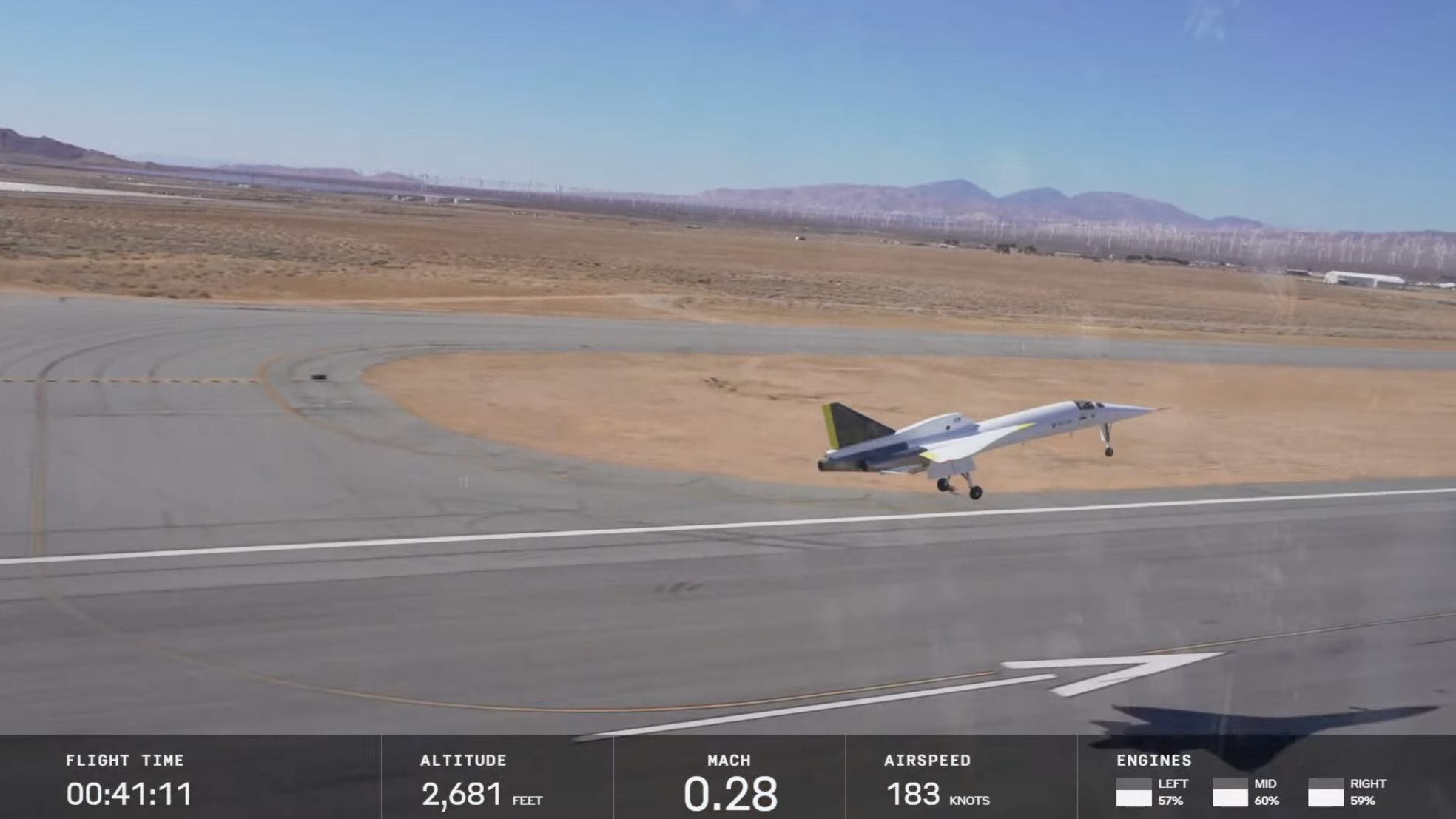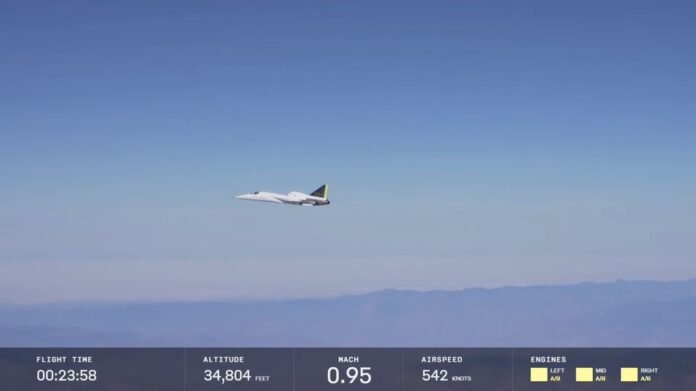Boom Supersonic’s XB-1 jet went out in style on Monday (Feb. 10).
The XB-1 broke the sound barrier three times during its 13th and final test flight, which lifted off Monday from the Mojave Air & Space Port in southeastern California at about 1:50 p.m. EST (1850 GMT; 10:50 a.m. local time in California).
“This is really a bittersweet day for for me, and I think for the entire XB-1 team,” Boom Supersonic Founder and CEO Blake Scholl said during the company’s webcast of the flight. “This is the last time that she’ll fly,” he added, after a pause during which it sounded like he got a bit choked up.
The XB-1 is a piloted pathfinder vehicle designed to pave the way for Overture, Boom’s planned commercial supersonic jet. The demonstrator is about one-third the size of Overture, which will seat 64 to 80 passengers.
Related: Boom Supersonic XB-1 jet breaks sound barrier on historic test flight (video)
The XB-1 lifted off for the first time in March 2024, on a flight that did not break the sound barrier (which is about 767 mph, or 1,234 kph, at sea level). The demonstrator flew 10 more subsonic flights, then went supersonic for the first time on Jan. 28 of this year.
Boom’s chief test pilot, Tristan “Geppetto” Brandenburg, broke the sound barrier three times during that landmark flight, which marked the first time a civil aircraft had ever gone supersonic over the continental United States.
Boom and Brandenburg repeated that feat during Monday’s sortie, which lasted about 41 minutes from liftoff to touchdown back at Mojave.
“We have achieved here with this flight test program what everyone thought previously was impossible — that a startup cannot do a supersonic airplane by themselves, without the help of the government, without the help of the larger OEM [original equipment manufacturer] organizations,” Nick Sheryka, Boom’s chief flight test engineer, said during Monday’s livestream.
“What we have done now, six times, is shown the world that we can design, develop, test — safely — a supersonic airplane,” he added.

Colorado-based Boom aims to bring back supersonic commercial flight, a feat pioneered by the British-French Concorde, which flew for the final time in 2003. Monday’s successful flight took the company a big step closer to making that happen.
“While it’s incredibly sad for me to leave the exciting world of flight testing experimental aircraft, it means we get to go all in, starting tomorrow, on what we started the company to do, which is to build that Overture airliner,” Scholl said.
Boom aims to lock in Overture’s overall design in just a week or so and to do the same with the jet’s Symphony engines next month, he added.
“Our goal is to be making thrust on those engines around the end of this year, start building the first Overture in about 18 months, roll it off the line in about three years [and] put it in the air in less than four,” Scholl said. “Our goal is to be ready for passengers by the end of 2029.”
None of the three sonic booms generated by the XB-1 on Monday were audible from the ground, which helps to explain why Boom is so confident that supersonic passenger flight can come back. (Frequent, loud booms heard over large cities, after all, would be a significant hurdle for operators to overcome.)
There’s a “cutoff altitude” above which audible sonic boom waves will refract upward off layers in the atmosphere. That altitude depends on properties such as temperature gradients and winds, Scholl and Sheryka explained in the livestream. On Monday, the cutoff altitude was about 7,000 feet (2,134 meters).
“Below that, you won’t hear it,” Sheryka said.


